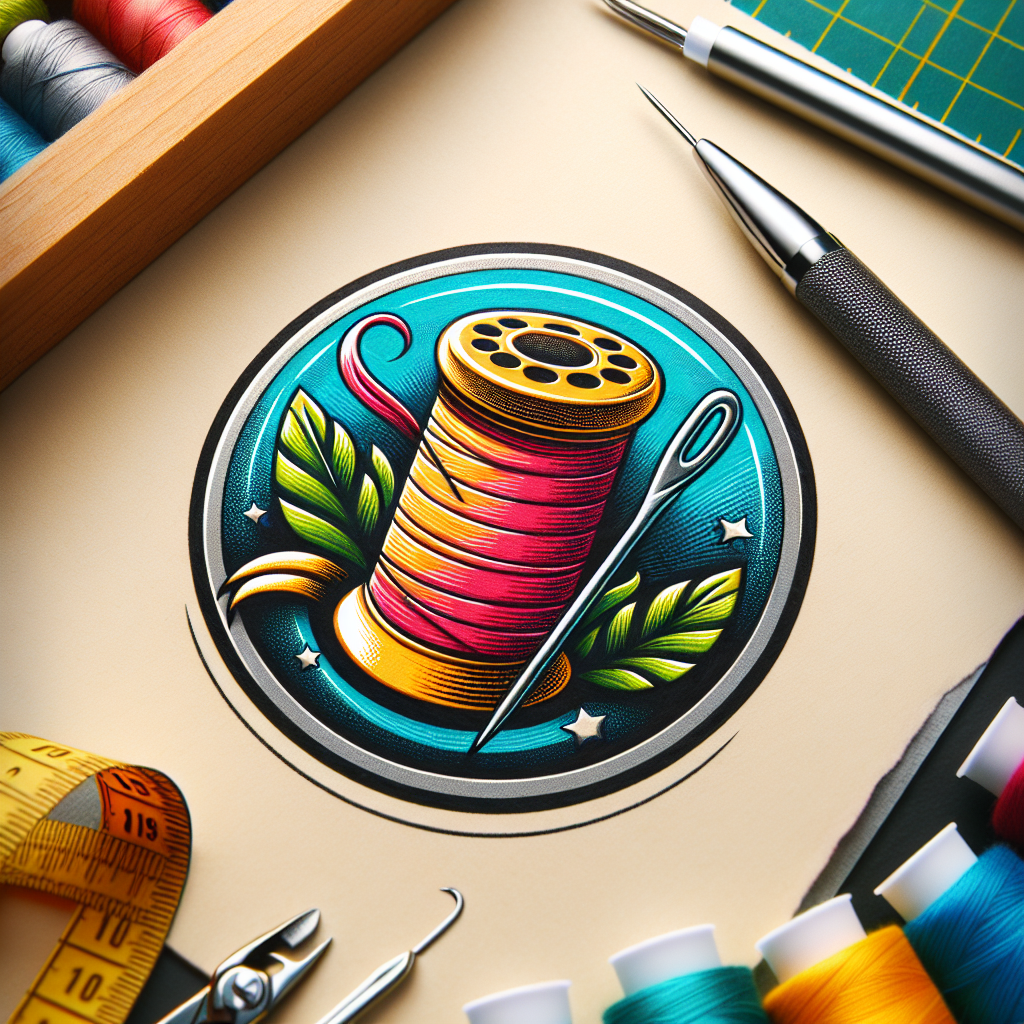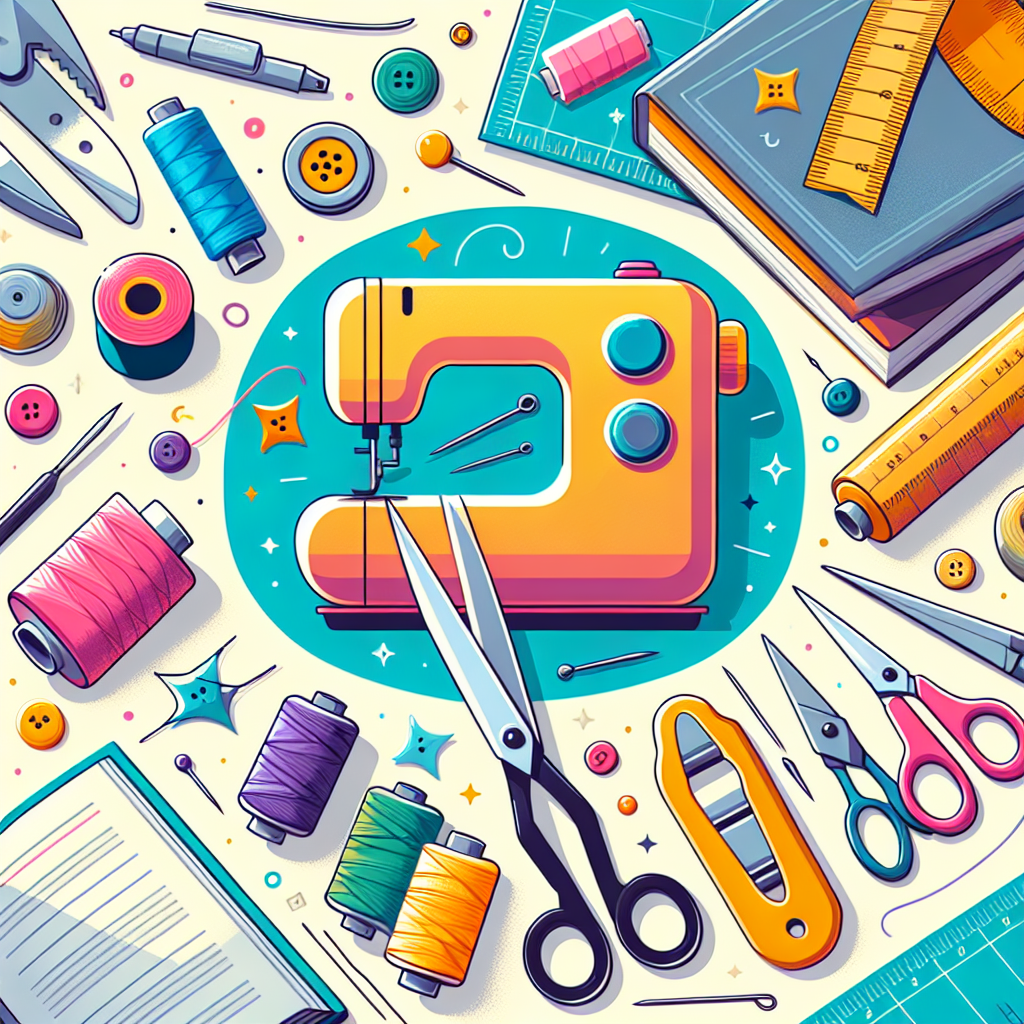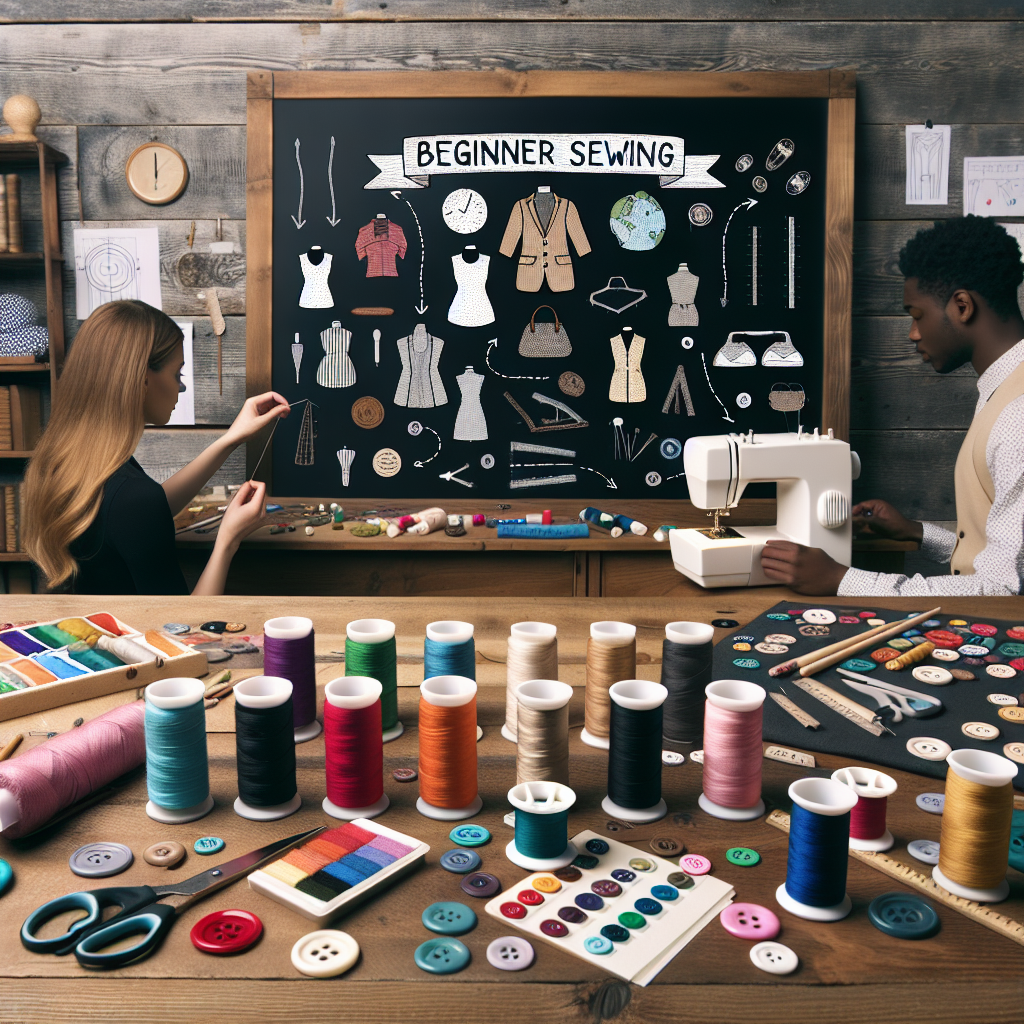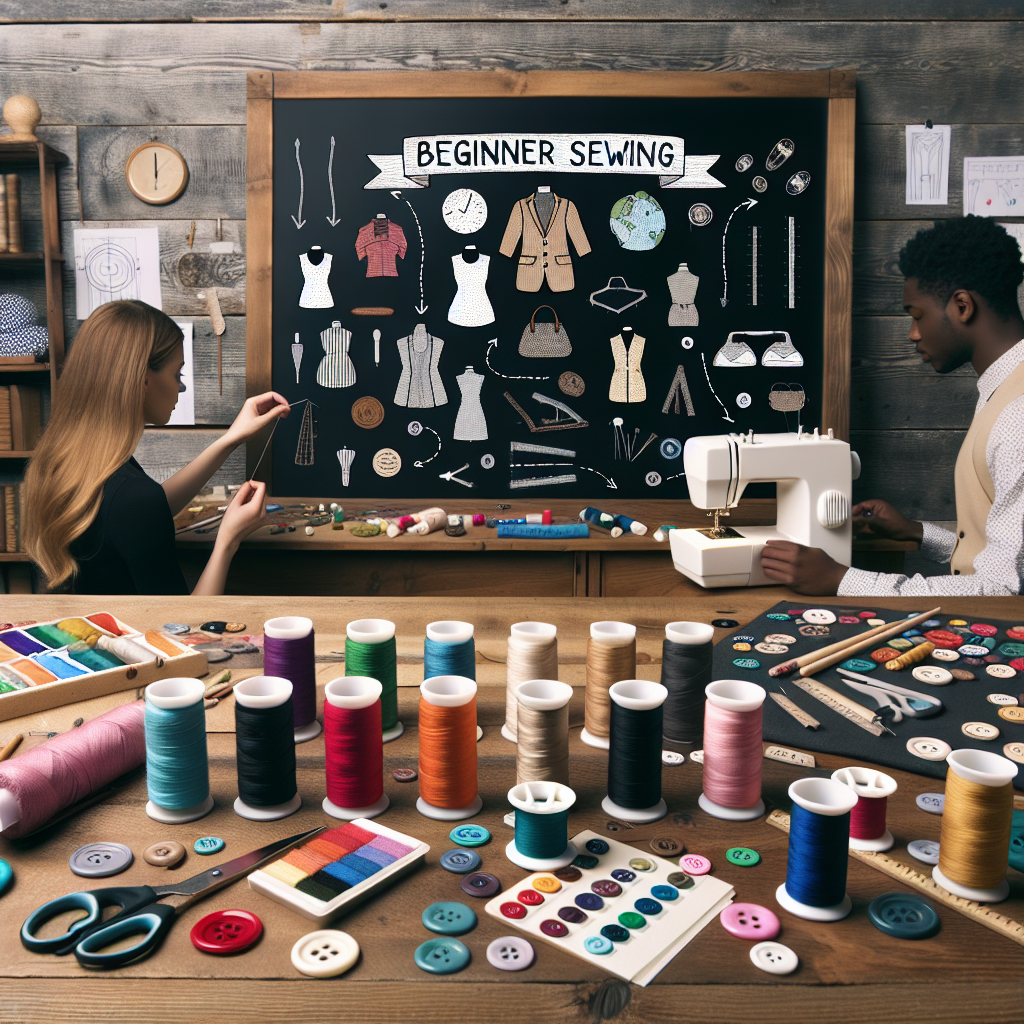So you’ve decided to learn how to sew, but you’re wondering where to begin? Well, the first thing to learn when it comes to sewing is mastering the art of threading a needle. This seemingly simple task may appear insignificant, but it is the foundation upon which all your sewing projects will be built. So, grab your needle and thread, because in this article we will explore the importance of threading and how to do it with ease. Get ready to embark on your exciting sewing journey!

Choosing a Sewing Machine
When it comes to choosing a sewing machine, it’s important to consider your skill level, research different types of machines, and also factor in your budget. Whether you’re a beginner or more experienced, finding the right sewing machine can make a huge difference in your sewing journey.
Consider Your Skill Level
First and foremost, it’s crucial to consider your skill level when selecting a sewing machine. If you’re just starting out and new to sewing, a basic machine with essential features will be more than sufficient. These machines are generally user-friendly and offer a variety of stitch options for your projects.
On the other hand, if you’re an advanced sewer or plan to tackle more complex sewing projects, you may want to invest in a more high-end sewing machine. These machines often come with advanced features and additional accessories that can help you enhance your sewing skills and take on more challenging projects.
Research Different Types of Sewing Machines
There are various types of sewing machines available on the market, each designed to cater to different sewing needs. Some common types include mechanical sewing machines, electronic sewing machines, computerized sewing machines, and embroidery machines.
Mechanical sewing machines are known for their simplicity and durability. They rely on manual adjustments and are great for beginners or those who prefer a more hands-on approach to sewing.
Electronic sewing machines, on the other hand, offer more automated features, such as automatic thread cutting and needle threading. These machines are popular among sewers of all skill levels and provide a good balance between ease of use and functionality.
For those who want even more advanced features and precise stitching, computerized sewing machines are a great choice. These machines offer programmable stitch patterns, digital displays, and even the ability to connect to your computer for custom designs.
Lastly, if you’re interested in adding embroidery to your sewing projects, an embroidery machine is the way to go. These machines specialize in intricate designs and allow you to embellish your creations with beautiful embroidery work.
By researching different types of sewing machines, you can determine which one suits your needs and preferences best.
Consider Your Budget
Budget is another important factor to consider when choosing a sewing machine. Sewing machines can range in price from affordable options to high-end, professional-grade machines. It’s important to set a budget and stick to it while ensuring you get the features you need.
If you’re a beginner and not yet sure how much you’ll be using your sewing machine, starting with a more budget-friendly option may be a wise decision. As your sewing skills grow and you become more passionate about sewing, you can always upgrade to a more advanced machine later on.
Remember, the key is to find a machine that meets your needs and fits your budget. It’s always a good idea to read reviews, compare prices, and even try out a few machines in person before making your final decision.
Understanding Sewing Machine Parts
To make the most of your sewing machine, it’s essential to familiarize yourself with its various parts. Understanding the different components and their functions will help you operate the machine more effectively and troubleshoot any issues that may arise.
Identify the Presser Foot
The presser foot is a crucial part of your sewing machine. It holds the fabric in place as you sew, ensuring it stays in position and doesn’t slip or wrinkle. There are various types of presser feet available, each designed for different purposes.
The standard presser foot is the most commonly used and is suitable for basic sewing tasks. However, there are specialized presser feet, such as the zipper foot, buttonhole foot, and blind hem foot, that come in handy for specific sewing techniques.
Make sure you familiarize yourself with the different presser feet that come with your sewing machine and learn how to attach and detach them properly. This knowledge will enable you to handle a wider range of sewing projects with ease.
Learn about the Feed Dogs
Feed dogs are small metal teeth located underneath the presser foot. They work in conjunction with the presser foot to move the fabric forward as you sew, ensuring smooth and consistent stitching. The feed dogs grip the fabric and guide it through the machine, allowing you to sew in a straight line.
Understanding the function of the feed dogs is essential for achieving even stitches and avoiding fabric bunching or puckering. Most sewing machines have a lever or switch that allows you to raise or lower the feed dogs, depending on the type of stitching or technique you are using.
Familiarize Yourself with the Bobbin and Bobbin Case
The bobbin and bobbin case are critical components of a sewing machine that play a vital role in creating the lower thread tension. The bobbin is a small spool that holds the lower thread, while the bobbin case holds the bobbin and regulates its movement.
To ensure smooth and even stitches, it’s important to wind the thread onto the bobbin correctly and insert it into the bobbin case without any tangles or jams. Practice winding and inserting the bobbin until you feel comfortable with the process.
Taking the time to understand and familiarize yourself with these sewing machine parts will lay a solid foundation for your sewing journey.

Threading the Sewing Machine
Threading the sewing machine correctly is essential for successful sewing. Learning the proper threading techniques will save you time and frustration while ensuring your stitches come out beautifully.
Preparing the Thread
Before threading your sewing machine, it’s important to prepare the thread correctly. Start by identifying the type of thread that is suitable for the fabric you’ll be sewing. Different thread types have different characteristics, so choose one that matches your project’s needs.
Once you have chosen the thread, unwind a suitable length from the spool. It’s important to cut the thread neatly and smoothly to prevent any tangles or snags during the threading process.
Threading the Upper Thread
Threading the upper thread is a step-by-step process that involves correctly guiding the thread through various parts of the sewing machine. Consult your sewing machine manual for the specific threading instructions as they may differ between machine models.
Typically, the process involves threading the thread through the thread guides, tension discs, and finally, the needle. Take your time and follow the steps carefully to ensure the thread is properly threaded and ready for sewing.
Winding and Inserting the Bobbin
Threading the bobbin is another important step in preparing your sewing machine for use. Follow the instructions in your sewing machine manual to wind the thread onto the bobbin correctly. Make sure the thread is evenly wound and tightly secured.
Once the bobbin is wound, insert it into the bobbin case following the machine’s instructions. This step is crucial as it allows the upper thread and the lower thread to work together to create the stitches.
Practice threading your sewing machine multiple times until you feel comfortable with the process. Threading will become second nature with time and practice, allowing you to focus on your sewing projects without any hindrances.
Using and Adjusting the Stitch Length
Understanding stitch length and being able to adjust it on your sewing machine is essential for achieving the desired results in your sewing projects. Stitch length refers to the distance between each stitch and plays a significant role in the durability, appearance, and functionality of your sewing.
Understanding Stitch Length
The stitch length determines the size and spacing of each stitch. Longer stitches are often used for basting or gathering fabric, while shorter stitches are ideal for creating secure seams and delicate topstitching.
Generally, a stitch length setting between 2.5 to 3 is suitable for most standard sewing tasks. However, it’s important to familiarize yourself with the different stitch lengths available on your specific sewing machine. By experimenting with different stitch lengths, you can discover the optimal setting for each project.
Adjusting Stitch Length on the Sewing Machine
Most sewing machines have a dial or lever that allows you to adjust the stitch length according to your needs. Consult your sewing machine manual to locate the stitch length control and understand how to make adjustments.
To ensure accurate stitch length, it’s important to adjust the settings before you start sewing. Test the stitch length on a spare piece of fabric to make sure it meets your requirements. By becoming comfortable with adjusting stitch length on your machine, you’ll have more control over the outcome of your sewing projects.

Learning to Sew Straight Lines
Sewing straight lines is a fundamental skill that every sewist should acquire. Whether you’re sewing seams, hemming garments, or adding decorative details, the ability to sew straight and even lines is essential for professional-looking results.
Marking the Fabric
Before sewing straight lines, it’s helpful to mark your fabric to guide your stitches. There are various methods you can use to mark your fabric, such as fabric markers, chalk, or even tailor’s tacks. Choose a method that is suitable for the type of fabric you’re working with and mark the lines accurately.
Using Guidelines and Seam Allowance
Once your fabric is marked, it’s important to align it with the appropriate guidelines on your sewing machine. Many machines have built-in guidelines or measurements to help you sew straight lines. Utilize these guides to keep your stitches even and straight.
Additionally, it’s crucial to maintain a consistent seam allowance when sewing straight lines. Seam allowance refers to the distance between the raw edge of the fabric and the line of stitching. By following the designated seam allowance for your project, you’ll ensure that your seams are strong and durable.
Maintaining a Consistent Seam Width
To sew straight lines, it’s important to maintain a consistent seam width throughout your project. This can be achieved by keeping your fabric aligned with the appropriate guideline or marking and guiding it steadily as you sew.
Practicing sewing straight lines on scrap fabric will help you develop a steady hand and improve your sewing accuracy. Take your time, be patient, and adjust your technique as needed to achieve perfectly straight lines in your projects.
Practice Sewing Basic Stitches
Now that you’re familiar with the various parts of your sewing machine and how to sew straight lines, it’s time to practice sewing basic stitches. Mastering these stitches will give you a solid foundation for tackling a wide range of sewing projects.
Practicing Straight Stitch
The straight stitch is the most basic and commonly used stitch in sewing. It is ideal for seaming fabric together, topstitching, or securing edges. To practice the straight stitch, simply align your fabric with the sewing machine’s guideline and sew straight lines across the marked fabric.
Start with slower stitching, focusing on maintaining even stitch length and steady guiding of the fabric. Gradually increase your speed as you become more comfortable with the motion and control required for straight stitching.
Experimenting with Zigzag Stitch
The zigzag stitch is another versatile stitch that comes in handy for various sewing techniques. This stitch is used for finishing raw edges, adding decorative touches, or creating stretchable seams. Experiment with different stitch widths and lengths to achieve different effects.
Similar to the straight stitch, align your fabric with the appropriate guideline on your machine and sew in a steady, controlled manner. Take your time to familiarize yourself with the zigzag stitch and discover its many possibilities in your sewing projects.
Trying Out Other Basic Stitches
In addition to the straight stitch and zigzag stitch, there are several other basic stitches you can explore. These stitches include the backstitch, basting stitch, and gathering stitch, among others. Each of these stitches serves a specific purpose and can elevate the quality and functionality of your sewing.
Take the time to experiment with these stitches on scrap fabric, paying attention to their characteristics and uses. By practicing these basic stitches, you’ll become more confident in your sewing abilities and expand your repertoire of techniques.
Understanding Seam Allowance
Seam allowance is a vital concept in sewing that refers to the distance between the raw edge of the fabric and the line of stitching. Understanding and utilizing seam allowance correctly is crucial for achieving professional-looking and durable seams in your sewing projects.
Defining Seam Allowance
The standard seam allowance is typically ⅝ of an inch, but it can vary depending on the project or pattern you’re working with. Seam allowance provides room for sewing and finishing the seam edges, ensuring that the stitches hold securely.
When sewing, it’s important to position your fabric to align with the designated seam allowance on your machine. By consistently sewing at the correct seam allowance, you’ll create strong seams that won’t fray or unravel easily.
Using Sewing Machine Foot for Accurate Seam Allowance
Many sewing machines come with specialized presser feet that help guide the fabric at a specific distance, ensuring accurate seam allowance. These feet are often marked with guidelines that help you align your fabric and maintain the desired seam allowance consistently.
Take the time to familiarize yourself with the different presser feet available for seam allowance guidance. Whether it’s the standard presser foot with marked guidelines or specialized feet like the quarter-inch foot for precision quilting, utilizing these tools will enhance your sewing accuracy and produce professional results.
Using Pins and Sewing Clips
Pins and sewing clips are essential tools in sewing that help hold fabric layers together securely before stitching. These tools ensure that the fabric doesn’t shift or move during sewing, allowing for precise and accurate stitching.
Choosing the Right Type of Pins
When it comes to pins, there are various types available, each suitable for different fabrics and projects. For lightweight fabrics, fine pins with sharp points are often the best choice. Knit fabrics or thicker materials may require longer pins with ball heads to prevent snags or damage.
It’s important to choose pins that are appropriate for your fabric and project to minimize the chance of distortion or damage. Experiment with different types of pins and find the ones that work best for you.
Applying and Removing Pins Properly
When applying pins to your fabric, it’s important to position them perpendicular to the sewing line. This allows you to easily remove the pins as you sew, preventing any accidents or damage to your machine.
When removing pins, make sure to do so just before the needle reaches them. This ensures that the fabric layers are securely held together until the last possible moment, resulting in more accurate stitching.
Using Sewing Clips as an Alternative
While pins are the go-to tool for holding fabric together, sewing clips offer an excellent alternative, especially for fabrics that may be damaged or distorted by pins. Sewing clips can securely hold multiple layers of fabric without causing any damage, making them ideal for delicate or thick materials.
Experiment with using sewing clips in your projects and determine when they are a better option than traditional pins. By adding sewing clips to your toolbox, you’ll have more flexibility and choice when it comes to securing your fabric during sewing.
Sewing Simple Projects
Now that you’ve learned the basics of operating your sewing machine, threading, stitching, and utilizing seam allowance, it’s time to put your skills to the test and start sewing simple projects. Starting with straightforward projects allows you to practice and build confidence in your abilities.
Starting with a Straight Line Project
A great project to start with is a simple drawstring bag or a fabric bookmark. These projects primarily involve sewing straight lines and can be completed relatively quickly.
To make a drawstring bag, simply cut two rectangles of fabric, sew them together on three sides, leaving an opening for the drawstring, and attach the drawstring to finish. For a fabric bookmark, cut a strip of fabric, fold it in half, and sew around the edges, leaving an opening for turning.
Projects like these will help you refine your skills in sewing straight lines and gain confidence in handling and manipulating fabric.
Making a Simple Tote Bag
Once you’re comfortable sewing straight lines and have mastered basic stitches, you can level up your sewing skills by making a simple tote bag. Tote bags are versatile and practical, making them an excellent project for beginners.
To make a tote bag, choose a durable fabric, such as canvas or denim. Cut two large rectangles for the main body of the bag and smaller rectangles for the handles. Sew the sides and bottom of the main body, attach the handles, and finish by folding and sewing the top edge.
By making a tote bag, you’ll practice more advanced techniques like sewing corners, attaching straps, and constructing a functional bag. This project will help you gain confidence in your sewing abilities while producing a useful and stylish accessory.
Sewing a Basic Pillowcase
Another great project for beginners is sewing a basic pillowcase. This simple yet functional project allows you to practice sewing straight lines and finishing edges neatly.
To make a pillowcase, choose a soft and comfortable fabric, ideally cotton. Cut a large rectangle for the main body of the pillowcase and a smaller rectangle for the pillow flap. Sew the side and bottom edges of the main body, fold over the flap, and attach Velcro or buttons for closure.
Sewing a pillowcase will further enhance your skills in aligning fabric, sewing straight lines, and finishing edges. It’s also a great opportunity to experiment with different decorative stitches or fabric combinations to add a personal touch to your project.
Learning to Backstitch
Backstitching is an invaluable technique in sewing that reinforces the beginning and end of seams, preventing them from unraveling. It’s a simple yet powerful method to secure stitches and add durability to your sewing projects.
Understanding the Importance of Backstitching
Backstitching is crucial for reinforcing seams, especially at the beginning and end, where stitches are more vulnerable to coming undone. It ensures that your hard work doesn’t go to waste and adds strength to your sewing.
Whenever you start a seam, backstitch a few stitches in reverse before continuing with your desired stitch length. Similarly, when reaching the end of a seam, reverse stitch again to lock the stitches in place.
By incorporating backstitching into your sewing routine, you’ll ensure the longevity and durability of your projects.
Practicing Backstitching Technique
To practice backstitching, select a scrap piece of fabric and draw a straight line. Begin sewing forward using the desired stitch length, then press the reverse stitch button or lever to sew a few stitches in the opposite direction. Finally, release the reverse function and continue sewing forward to the end of the line.
Repeat this process multiple times until you feel comfortable with the motion and technique of backstitching. Remember to start and end each line with backstitches to reinforce the seams and prevent them from unraveling.
Using Backstitch at the Beginning and End of a Seam
When working on actual sewing projects, always incorporate backstitching at the beginning and end of each seam. By backstitching, you’ll ensure that your stitches remain intact and your finished projects withstand regular use and washing.
As you gain more experience in sewing, you can experiment with decorative backstitching or even combination stitches like the lockstitch, which automatically backstitches at the start and finish of each seam.
Backstitching is a skill that every sewist should master early in their sewing journey. It’s a simple yet crucial technique that adds strength and durability to your finished projects.
In conclusion, choosing a sewing machine that suits your skill level, researching different types of machines, and considering your budget are vital steps in setting yourself up for sewing success. Understanding the various parts of your sewing machine, such as the presser foot, feed dogs, and bobbin, will make your sewing experience more efficient and enjoyable. Threading your sewing machine correctly, adjusting the stitch length, and learning to sew straight lines are essential techniques to develop as a sewist. Practice sewing basic stitches, understand the importance of seam allowance, and utilize pins and sewing clips for secure fabric placement. Sewing simple projects, such as drawstring bags, tote bags, and pillowcases, will allow you to apply your new skills and gain confidence. Finally, mastering backstitching will add strength and durability to your sewing projects. By following these steps and honing your skills, you’ll be well on your way to becoming a skilled and versatile sewist. Happy sewing!

